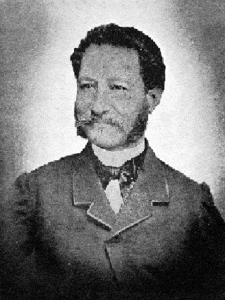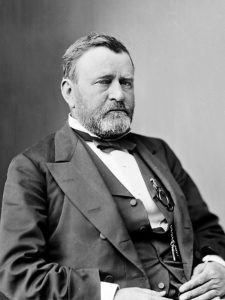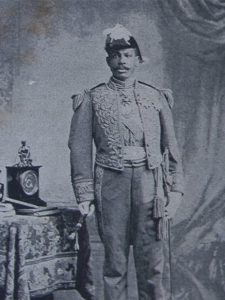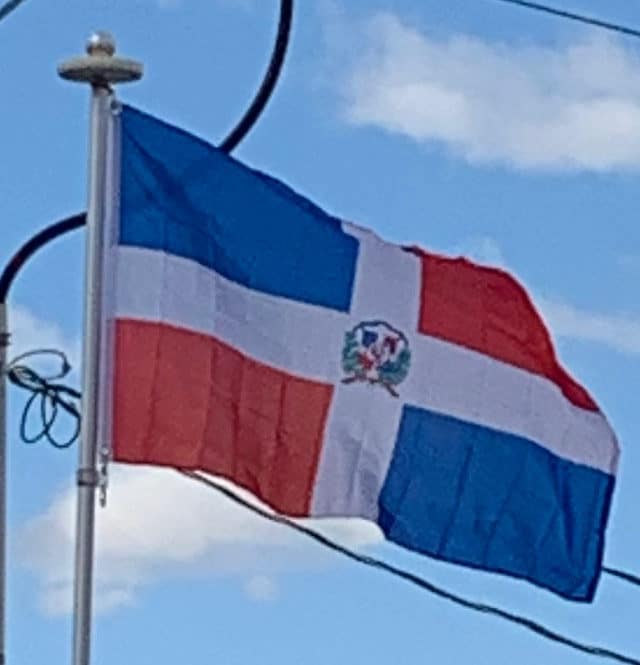After defeating a new Haitian invasion in 1849, Santana marched on Santo Domingo and deposed Jimenes in a coup d’état. At his behest, Congress elected Buenaventura Báez as President, but Báez was unwilling to serve as Santana’s puppet, challenging his role as the country’s acknowledged military leader.

In 1853, Santana was elected president for his second term, forcing Báez into exile. Three years later, after repulsing another Haitian invasion, he negotiated a treaty leasing a portion of Samaná Peninsula to a U.S. company; popular opposition forced him to abdicate, enabling Báez to return and seize power. With the treasury depleted, Báez printed eighteen million uninsured pesos, purchasing the 1857 tobacco crop with this currency and exporting it for hard cash at immense profit to himself and his followers. Cibao tobacco planters, who were ruined when hyperinflation ensued, revolted and formed a new government headed by José Desiderio Valverde and headquartered in Santiago de los Caballeros. In July 1857 General Juan Luis Franco Bidó besieged Santo Domingo. The Cibao-based government declared an amnesty to exiles and Santana returned and managed to replace Franco Bidó in September 1857. After a year of civil war, Santana captured Santo Domingo in June 1858, overthrew both Báez and Valverde and installed himself as president.
Restoration Republic:
In 1861, after imprisoning, silencing, exiling, and executing many of his opponents and due to political and economic reasons, Santana signed a pact with the Spanish Crown and reverted the Dominican nation to colonial status. This action was supported by the cattlemen of the south while the northern elites opposed it. Spanish rule finally came to an end with the War of Restoration in 1865, after four years of conflict between Dominican nationalists and Spanish sympathizers.

Political strife again prevailed in the following years; warlords ruled, military revolts were extremely common, and the nation amassed debt. In 1869, President Ulysses S. Grant ordered U.S. Marines to the island for the first time. Pirates operating from Haiti had been raiding U.S. commercial shipping in the Caribbean, and Grant directed the Marines to stop them at their source. Following the virtual takeover of the island, Báez offered to sell the country to the United States. Grant desired a naval base at Samaná and also a place for resettling newly freed Blacks. The treaty, which included U.S. payment of $1.5 million for Dominican debt repayment, was defeated in the United States Senate in 1870 on a vote of 28–28, two-thirds being required.
Báez was toppled in 1874, returned, and was toppled for good in 1878. A new generation was thence in charge, with the passing of Santana (he died in 1864) and Báez from the scene. Relative peace came to the country in the 1880s, which saw the coming to power of General Ulises Heureaux.

“Lilís,” as the new president was nicknamed, enjoyed a period of popularity. He was, however, “a consummate dissembler,” who put the nation deep into debt while using much of the proceeds for his personal use and to maintain his police state. Heureaux became rampantly despotic and unpopular. In 1899, he was assassinated. However, the relative calm over which he presided allowed improvement in the Dominican economy. The sugar industry was modernized, and the country attracted foreign workers and immigrants.
20th Century (1900–30):
From 1902 on, short-lived governments were again the norm, with their power usurped by caudillos in parts of the country. Furthermore, the national government was bankrupt and, unable to pay Heureaux’s debts, faced the threat of military intervention by France and other European creditor powers.
